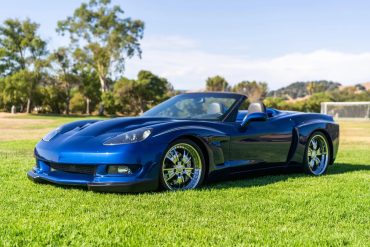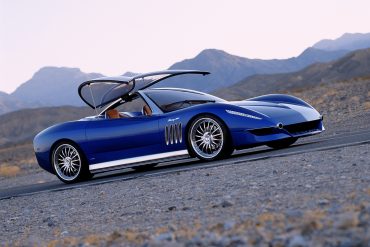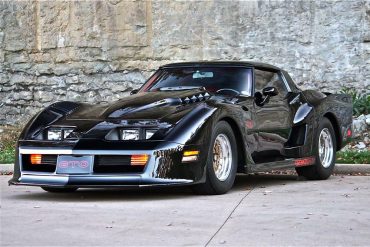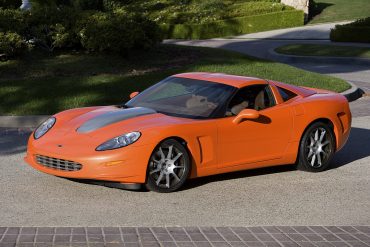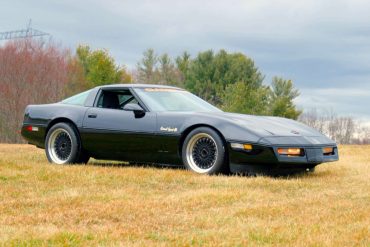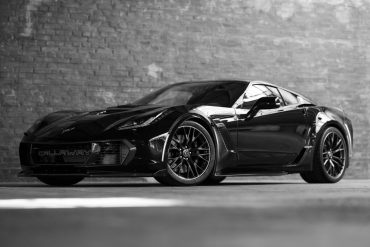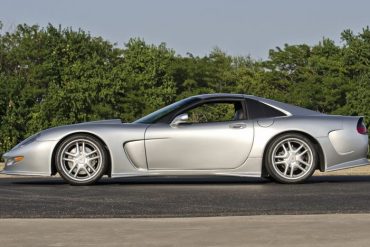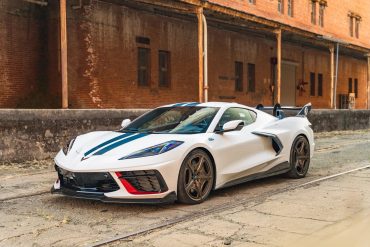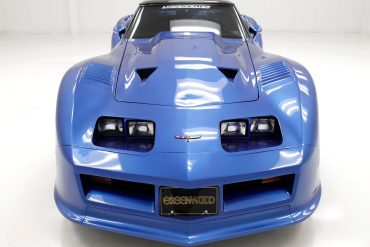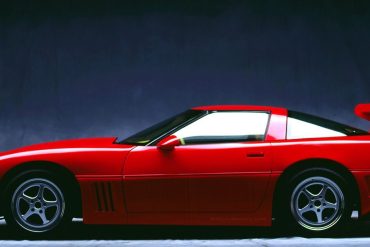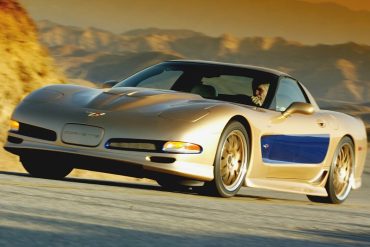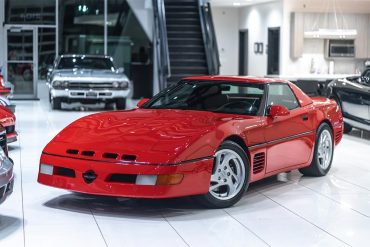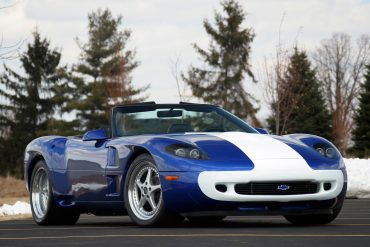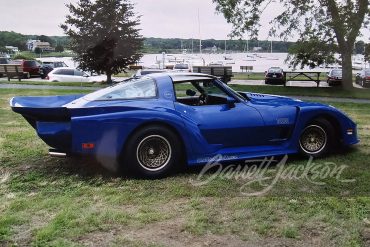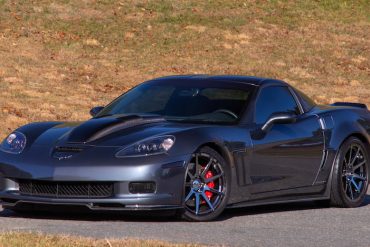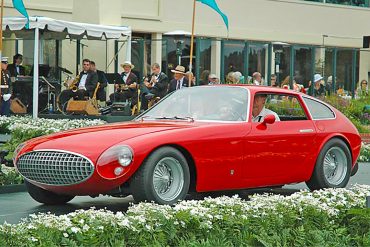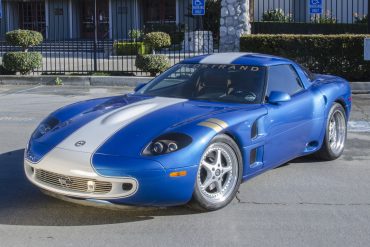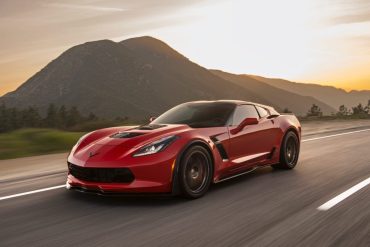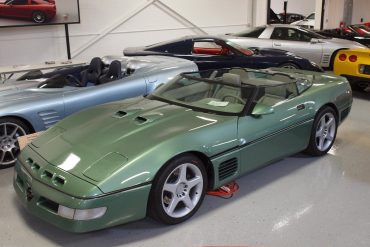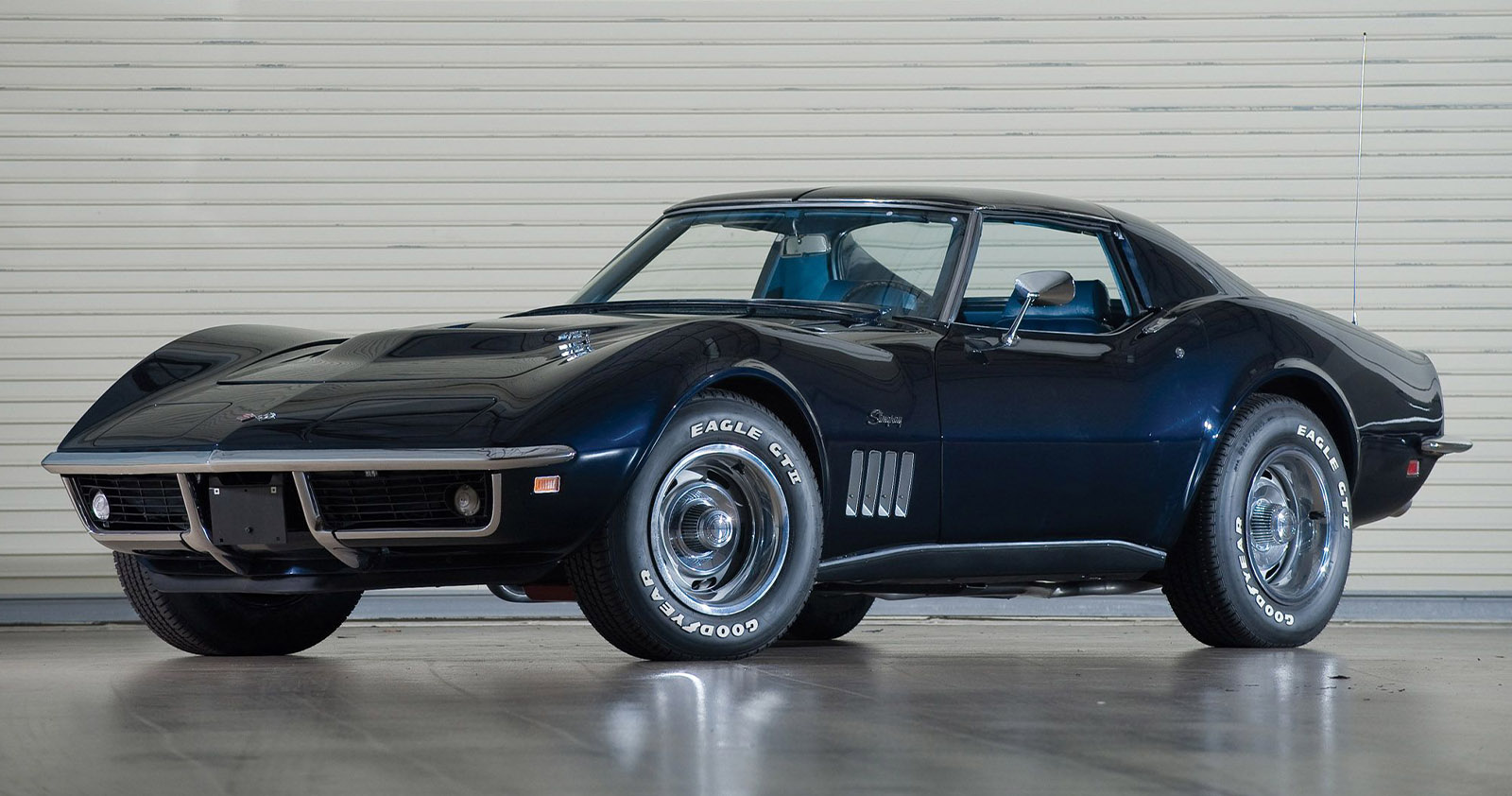The STS ZR7 debuted at the 2008 SEMA show in Las Vegas, intended as a limited production of 50 Corvettes...
The Moray project, presented for the first time at the Geneva Motor Show on March 4, 2003, embodies the homage that Giorgetto and Fabrizio Giugiaro wish to pay to the fifty-year era of the Chevrolet Corvette, the supreme symbol of the American sports car. Touched by drifting tides with long and slender front lights, bringing immediately to mind the Moray, the English term for the eel-type fish, muraena helena, found in Mediterranean waters.
The major differences between the 1980 and 1982 Daytona and the 1981 GTO are the hood, the tops of the rear fenders, and the rear spoiler/bumper cover. The Daytona had an elaborate, short vertical fin on top of the rear fender that turned several turns “in and back,” flowing to the wide, long, table-like rear spoiler. The GTO’s rear fenders pontoons are the same as.
The Callaway C16 was Callaway’s 16th major automotive project. It was a limited production, bespoke automobile, built to order, by what the Press called “the best specialist engineers in the business”. These cars are seriously fast, beautiful, and exclusive. The C16 was a direct competitor for the Porsche GT3, the Lamborghini Murcielago, the Ferrari 599 GTB. It was both faster and more capable than its competitors, at less cost.
When Dick Guldstrand introduced the GS80 series in 1986, the car was targeted specifically at Pro-Solo and autocross enthusiasts. He knew all about the needs of these groups, as he was a longtime provider of performance upgrades for the C3 and a direct supporter of a small team of racers from the Western Council of Corvette Clubs. Up to this point, Dick had basically been a tuner. With the intro of the GS80 he was venturing into the realm of small-volume manufacturing.
The 25th Anniversary Edition is a hardened up version of Callaway's Corvette SC757, which in turn is based on a C7-generation Corvette Z06. It features a supercharged V8 that pumps out 757-horsepower and 777 pound-feet of torque. The supercharger is a GenThree Callaway unit with the company's TripleCooled intercooler system. A high-flow intake system feeds that beast. Callaway's Level Two HD Cooling System also helps it avoid the overheating issues that plagued C7 Z06s.
Callaway has built a firm reputation for producing some of the most sophisticated and advanced Corvette-based automobiles. Introduced in 1998, Callaway’s C12 continued this proud legacy. Designed, developed and constructed by two top German engineering and development companies, Callaway and IVM, the C12 was intended as a bespoke, high-performance car that offered its occupants a civilized interior and relaxed ride. One of the most respected Corvette super-cars ever.
The 60th Anniversary Cunningham Corvette is a special edition with only 60 units produced, inspired by the No. 3 car...
What you see before you is a 1982 Chevrolet Corvette that has been fitted with a rare Greenwood Daytona body kit. The most extreme of the Greenwood brothers' kits, the Daytona body kit is a highly sought-after modification that was developed by race-winning specialists Burt and John Greenwood.
When Chevrolet changed gears to the LT1 engine, Callaway revealed their new SuperNatural line and the CR1 based on the ZR1’s LT5. Options for the CR1 included the radical Aerobody, German upholstery and special wheels, brakes and exhausts. The CR1 used a larger displacement to produce either 475 or 490 bhp.
Reeves Callaway has always had a dream of competing a Corvette of his own at the 24 Hours of Le Mans, France. The idea begin with the body work for a street version, but one thing led to another, and a full race version was completed as well. The street version is almost identical to the race version because the hood, tail, rocker panels, and lower door halves, are all made of carbon fiber, just like the race version.
In 2003 Dick produced his version of a 50th Anniversary Corvette. Dick’s 50th Anniversary Corvette was bright gold with blue accents. And of course a “special” Corvette should be the toughest available version, which in 2003 was the Z06. And to top it all off, the Z06’s LS6 was opened up to the magical “426 CID.” The GS80 came out in 1986 that was more or less a Showroom Stock-prepared black beauty with very trendy lace wheels.
The Story of the Elusive Scaglietti Corvettes Created With the Help of Carroll Shelby History is a curious thing, we...
Chevrolet's introduction of the LT1 in 1992 as the base engine in the Corvette phased out the L98 based Callaway Twin Turbo. Previously, Callaway Corvettes made their increased power through positive manifold pressure; now they made it through increased displacement and finesse. Initially called the CL1 or CR1, they designated the chassis they were built upon. They were based on the pushrod LT1 cars (CL1) or the 32 valve DOHC LT5 ZR-1 cars (CR1).
To understand why the Guldstrand GS-90 coupe and convertible differ so much, keep in mind that during the course of the C4 development cycle, no ZR-1 convertibles were planned, so the base C4 convertible had to be used in building a GS-90 Nassau Roadster, as it was called. The coupe, however, had the advantage of using the ZR-1 platform right from the get-go.
If you happened to see this 1981 Greenwood Daytona Turbo out in the wild, at first glance, you might shrug...
To commemorate its quarter-century milestone, Callaway Cars collaborated with Chevrolet, arranging a production run of 25 uniquely prepared 2012 Corvette Grand Sport coupes and convertibles. General Motors supplied special parts and procedures on the Bowling Green production line to facilitate final assembly at Callaway factories. Then, the performance and identity components are installed by Callaway. The 25th Anniversary Edition produced 620 bhp and 555 lb-ft of torque.
This one-off 1961 Vignale Corvette was built for the 1961 Salon de l'Automobile in Paris, France. It was based on a 1960 Corvette chassis and built by Italian coachmaker Carrozzeria Vignale. The body was designed by Gordon Kelly.
As the story goes, when the Corvette ZR-1 came out in 1990, Dick Guldstrand saw an opportunity to create his vision of the perfect Grand Sport ride, instead of his name just getting slapped onto another Chevrolet product. He asked GM for fifteen ZR-1’s and some money. He got one car and permission to do whatever he wanted to do with it. And that’s exactly what he did. Called the "GS90", Dick's car would prove to be the most elaborate and expensive specialty Corvette ever built.
In the tradition of coach built shooting brakes, Callaway offers the AeroWagen for any version of the C7 Corvette Coupe. Its components can be fitted to the standard production C7, the Callaway SC627 Stingray or Grand Sport, or the Callaway SC757 Z06. The AeroWagen hatch assembly is a part-for-part replacement of the original equipment Corvette rear hatch, using the original hardware and latching mechanisms. It operates in an identical fashion.
In 1989 Callaway introduced a Speedster which was the culmination of their styling, engineering and trimming talents. Their first example was a bright green ZR1, which had a severely chopped windscreen, no side mirrors, eighteen inch wheels and a vibrant blue leather interior stitched purposefully from Germany. Nothing about Callaway’s Speedster was reserved, and this is especially true when investigating the specification. The car had 450 horsepower.
No More Content


